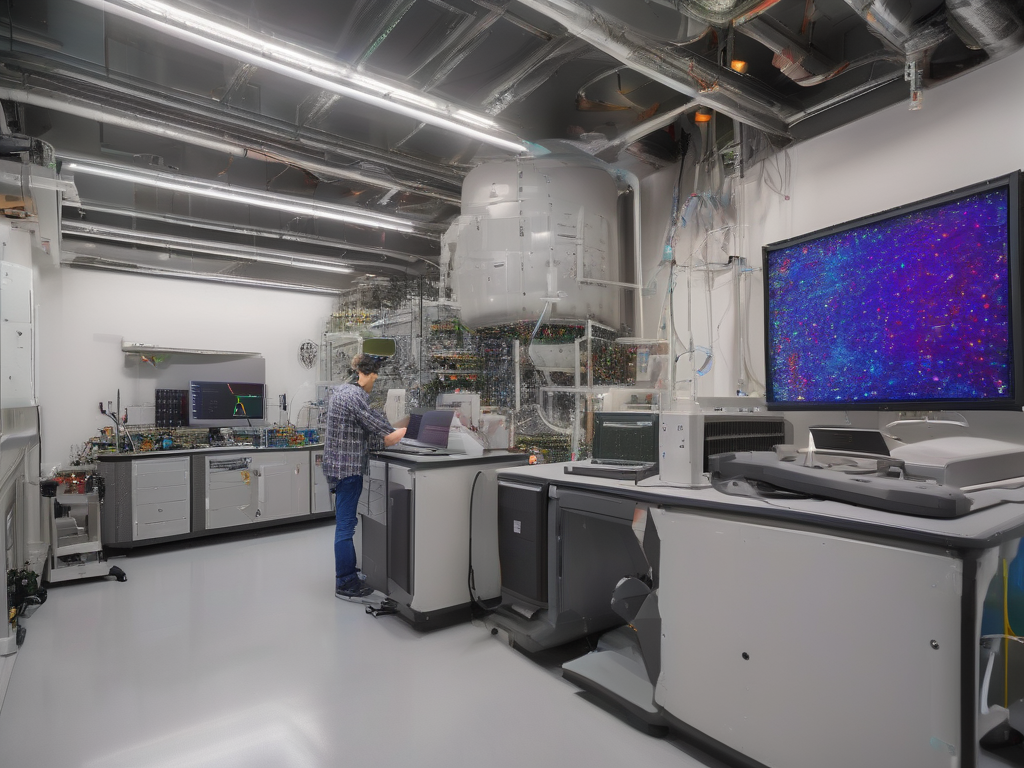USC AI Breakthrough: Allegro-FM Simulates Billions of Atoms for Carbon-Neutral Concrete
University of Southern California researchers have developed Allegro-FM, a revolutionary AI model that can simulate the behavior of over 4 billion atoms simultaneously, opening unprecedented possibilities for materials discovery and proving the theoretical feasibility of carbon-neutral concrete.
Quantum-Scale AI Simulation Breakthrough
Published in The Journal of Physical Chemistry Letters, the breakthrough represents computational capabilities roughly 1,000 times larger than conventional molecular simulation approaches. Allegro-FM achieved 97.5% efficiency when simulating over four billion atoms on the Aurora supercomputer at Argonne National Laboratory.
"You can just put the CO2 inside the concrete, and then that makes a carbon-neutral concrete," explains Prof. Aiichiro Nakano, highlighting the model's discovery that carbon dioxide emissions from concrete production can be recaptured and incorporated back into the material itself.
Revolutionary Materials Design Approach
The breakthrough lies in Allegro-FM's unprecedented scalability. While existing molecular simulation methods are limited to systems with thousands or millions of atoms, this new approach can model entire material systems at realistic scales.
Key capabilities include:
- 4+ billion atom simulation with near-perfect efficiency
- 89 chemical elements coverage for comprehensive materials modeling
- Real-time property prediction for mechanical and structural characteristics
- Accelerated discovery through virtual testing before expensive experiments
Carbon-Neutral Concrete Innovation
Concrete production currently accounts for approximately 8% of global CO2 emissions. Allegro-FM's simulations demonstrate that incorporating captured CO2 into concrete structures creates multiple benefits:
- Carbon neutrality by sequestering production emissions
- Enhanced durability with carbonate layers increasing robustness
- Extended lifespan potentially exceeding 2,000 years like ancient Roman concrete
- Fire resistance crucial for wildfire-prone regions like Los Angeles
"If you put in the CO2, the so-called carbonate layer, it becomes more robust," Nakano notes, explaining how carbon incorporation strengthens concrete beyond current 100-year lifespans.
AI-Accelerated Research Methodology
The development leveraged machine learning to replace traditional quantum mechanical calculations with trained interaction functions. This approach dramatically reduces computational requirements while maintaining quantum mechanical accuracy.
Prof. Ken-Ichi Nomura explains: "Instead of deriving all these quantum mechanics from scratch, researchers are taking [the] approach of generating a training set and then letting the machine-learning model run."
Technical Innovation and Validation
Allegro-FM's architecture enables:
- Interaction function prediction between diverse atomic combinations
- Cross-element simulation without separate formulas for each element
- Reduced computing requirements freeing supercomputer resources
- Quantum mechanical accuracy with significantly less computational overhead
The model can accurately predict how atoms react and interact across nearly the entire periodic table simultaneously, eliminating traditional limitations requiring individual equations for different elements.
Climate Impact and Applications
Beyond concrete, the technology offers transformative potential for:
- Carbon capture materials design for atmospheric CO2 removal
- Sustainable building materials with negative carbon footprints
- Advanced composites for renewable energy infrastructure
- Wildfire-resistant construction combining safety with sustainability
The timing proves particularly relevant following Los Angeles' January wildfires, where fire-resistant yet sustainable building materials become critical for reconstruction efforts.
Research Collaboration and Future Development
The project involves longtime collaborators Nakano and Nomura, working with Priya Vashishta and Rajiv Kalia. Their decades-long partnership in "CO2 sequestration" research has now achieved breakthrough scalability through AI acceleration.
"Concrete is also a very complex material. It consists of many elements and different phases and interfaces. So, traditionally, we didn't have a way to simulate phenomena involving concrete material. But now we can use this Allegro-FM," Nomura explains.
Commercial Timeline and Implementation
The researchers continue developing more complex geometries and surface interactions. Next steps include:
- Pilot concrete production incorporating CO2 sequestration
- Material property validation through extensive testing
- Manufacturing process optimization for commercial viability
- Building code integration ensuring regulatory compliance
Industry analysts project commercial applications could emerge within 3-5 years, initially for specialized construction projects before broader adoption.
The breakthrough represents a crucial advancement toward sustainable construction materials that actively contribute to climate solutions while delivering superior performance characteristics.
Ready to implement these insights?
Let's discuss how these strategies can be applied to your specific business challenges.
You might also like
More insights from AI Technology
